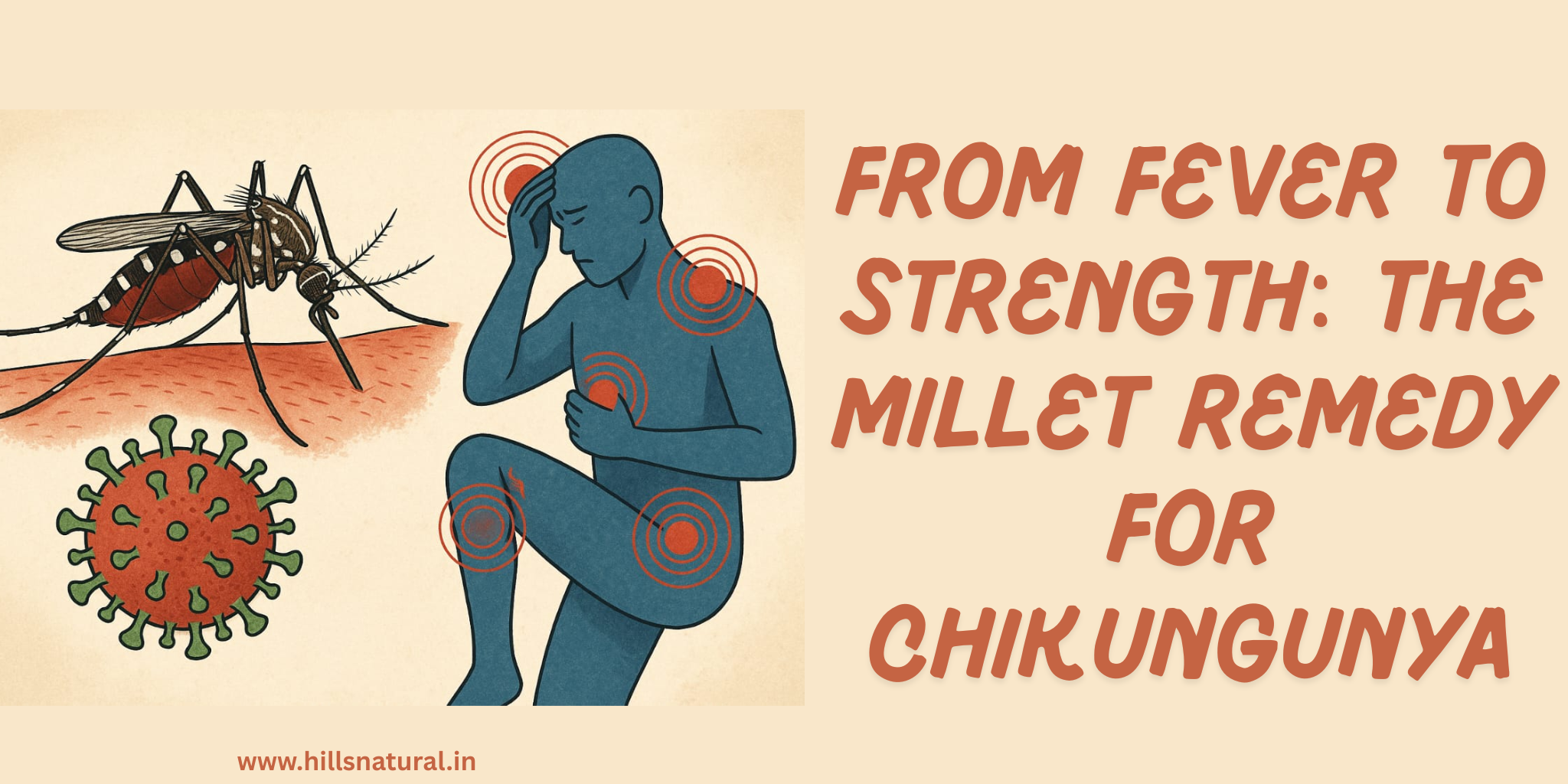
When battling a viral illness like chikungunya, the body craves rest, resilience, and recovery. While modern medicine handles the symptoms, nature has quietly offered its own support system in the form of ancient grains—millets. These humble superfoods, long forgotten in mainstream diets, are making a comeback for a reason: they nourish deeply, heal gently, and restore balance.
This blog explores how a 10-day millet rotation can support recovery and strengthen the body post-chikungunya, focusing on five powerhouse millets—brown top, foxtail, kodo, little, and barnyard millet.
Why Millets for Chikungunya?
Chikungunya often leaves behind lingering joint pain, fatigue, and inflammation. Millets, being anti-inflammatory, gluten-free, and nutrient-dense, support healing in multiple ways:
- Rich in fiber – aids digestion and detox
- High in minerals – like magnesium, phosphorus, and iron to rebuild strength
- Low glycemic index – helps stabilize blood sugar and prevent post-viral fatigue crashes
- Naturally alkaline – supports internal balance and reduces inflammation
The 10-Day Millet Recovery Plan
Day 1–3: Browntop Millet – The Detoxifier
Brown top millet is known for its cleansing properties. It helps detoxify the body after the viral assault. It’s light on digestion and great for flushing out toxins while strengthening the gut.
Try: Brown top millet porridge with cumin and curry leaves, or a simple steamed upma.
Day 4–6: Foxtail Millet – The Energizer
Foxtail millet is a slow-releasing carb source packed with iron and protein—ideal for combating post-viral fatigue and supporting joint recovery.
Try: Foxtail millet khichdi with turmeric or a soothing millet mango smoothie for nourishment and hydration.
Day 7: Kodo Millet – The Calmer
Kodo millet helps reduce inflammation and is especially soothing for joint pain—one of the most persistent after-effects of chikungunya.
Try: Kodo millet Pongal or a warm salad with steamed veggies and ghee.
Day 8: Little Millet – The Immunity Booster
High in antioxidants and easily digestible, little millet helps rebuild immunity and supports nutrient absorption when the digestive system is still sensitive.
Try: Little millet lemon rice or a lightly spiced porridge.
Day 9: Barnyard Millet – The Rebalancer
This millet helps balance electrolytes and provides sustained energy, rounding out the recovery phase with strength and stamina.
Try: Barnyard millet dosa or a light millet vegetable stew.
Day 10: Custom Combo Day
Rotate your favorite millet from the plan or combine two in a meal. Listen to your body—it now knows what real nourishment feels like.
Tips for the Plan
- Keep meals simple – avoid overly spicy or heavy preparations
- Include spices like turmeric, ginger, and cumin – known for their anti-inflammatory and digestive benefits
- Hydrate well – millets work best with ample water
- Pair with seasonal vegetables – for added nutrients and recovery support
Final Thoughts: Healing Beyond the Plate
Chikungunya can leave the body feeling broken. But healing is not just about medications—it’s about how we eat, rest, and rebuild. Millets offer a sustainable, gentle, and deeply nourishing path back to health. When consumed mindfully, these ancient grains become more than food—they become medicine.
Let your kitchen be the recovery room. Start with millet.

